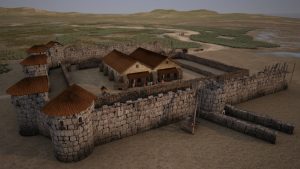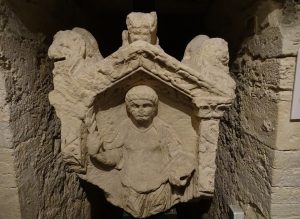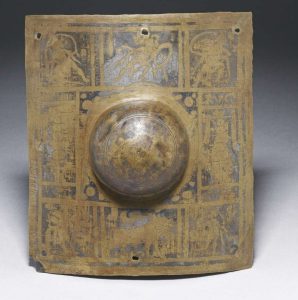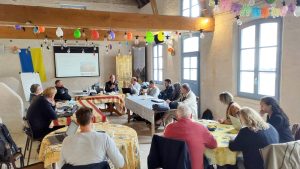I am publishing this article to bring to your attention an innovative and exciting project in the field of archaeology and history: “Bridging the North Sea”. This project was brought to my attention by Michel Gybels who is part of the project. Michel is one of the authors of this blog – he has shared with Timetravelrome several of his archaeological trips. Thank you, Michel for this news !
The Bridging the North Sea Project
The Bridging the North Sea project is a remarkable initiative that aims to connect regions, communities, and academic experts along the North Sea coast. The Roman North Basin had no boundaries as we know them today. The Bridging the North Sea project embraces this concept, working and communicating across modern boundaries. Supported by the Straits Committee, this transnational effort seeks to explore the Roman period in the North Sea basin, shedding light on historical and archaeological discoveries in the region. By bridging the gap between the past and the present, the project endeavors to raise awareness of maritime heritage of the North Sea coast.

Roman Castellum Brittenburg, digital reconstruction by Xinas. Source: https://www.xinas.nl/roman-castellum-brittenburg/
Unveiling the Roman Era
The Bridging the North Sea project brings together experts, scholars, and volunteers from the United Kingdom, France, Belgium, and the Netherlands. With a focus on the Roman era, this transnational collaboration aims to assemble working groups that connect the local and regional experiences of each partner region. By studying the historical and archaeological aspects of the North Sea basin, the project seeks to reconstruct the ancient landscape and understand its significance within the wider Roman Empire.

Roman relief in the City Museum of Boulogne sur Mer. Photo taken by Michel Gybels.
Themes and Research Areas
The project encompasses various themes and research areas that provide a comprehensive understanding of the North Sea basin in Roman times.
- One crucial aspect is the exploration of sea and waterways, such as the waterway to Aardenburg in Zeeland, the river Tyne in North East England, and the river Rhine in South Holland. These waterways were vital for trade and defense, and the study of Roman castles, fortifications, and vessels/ships offers insights into the Roman coastal defense system.
- Material culture studies play a crucial role in deciphering the meaning behind archaeological finds. Expert meetings in the participating regions foster exchange and collaboration, enabling a deeper understanding of trade routes, cultural exchanges, and the daily lives of coastal communities during the Roman period.

Shield boss of Junius Dubitatus. Roman Britain, early 2nd century AD Found near the mouth of the River Tyne in 1867. Source: British Museum.
- Beach archaeology brings lost sites to life, such as the fleet-castellum near Vrouwenpolder in Zeeland and the fortification Brittenburg near Katwijk in South Holland. By excavating these structures, archaeologists unearth insights into coastal defense systems, settlement patterns, and the impact of changing coastlines on Roman communities.
Timeline of the Project
On the 9th and 10th of May 2023 the kick-off meeting of the Bridging the North Sea project took place in Tilques and Boulogne-sur-Mer (FR), with 15 partners from 8 regions.
The partners have 1,5 years to build the network and complete the goals of the project, and will present the results of their work in June 2024 at a final conference that will be held at the Museumpark Archeon, in Alphen aan den Rijn in the Province of South Holland (NL).

“Bridging the North Sea” project kick off meeting on the 09th of May 2023. Photo by Michel Gybels.
More information about the project can be found here:
https://bridgingthenorthsea.org (EN)
https://straitscommittee.eu (EN-FR-NL)
Source of the header image: The Brittenburg after Abraham Ortelius. This engraving is from Guicciardini’s description of the Netherlands, published from 1582 to 1588. Public Domain.


